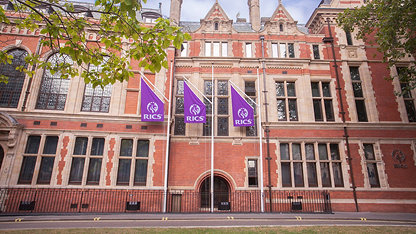APAC industry leaders, gathered for an RICS-hosted forum, revealed that office occupancy rates are still vastly lower than pre-pandemic levels. Many reported occupancy levels as low as 20%, with few recording levels up to around 30%. Large corporations also tended to have lower occupancy than small- and medium-sized enterprises (SMEs).
Leaders were asked about performance in the context of financial uncertainty, budgetary constraints and reduced occupancy levels. How do these factors impact services, operations and investment in space?
It was against this backdrop that leaders made their startling revelation regarding back-to-office drives in a post-pandemic world. Organisations seldom had more than 35% of their staff physically present in the office at any one time; a range of 20–30% was quoted as being most common.
Not only are such rates still extremely low compared with pre-pandemic standards, but according to participants in many regions they are not evenly dispersed throughout the week. Some organisations have adopted in-office days from Tuesday to Thursday, leaving retail and food and beverage outlets struggling with vastly reduced footfall Friday through Monday.
Beyond office space, other commercial property sectors have much higher occupancy levels, especially warehouse and industrial, where for the vast majority of employees working from home is simply not an option due to the nature of the work involved. Even in the office sector, the number of organisations still tied into pre-COVID leases means that there may be further changes as these leases expire or come up for renewal.
Back to the office: anxiety, workplace distraction, collaboration
When asked to account for the continued low level of workplace occupancy, leaders pointed to two main factors:
- anxiety that many employees felt about returning to the office and
- dissatisfaction with the office environment.
Anxiety that employees may feel about returning to the office is a complex issue. On the one hand, feelings of anxiousness are a perfectly logical response in the aftermath of a global pandemic; on the other, leaders also mentioned that some employees had suffered from the effects of isolation due to working from home for an extended period. Also worth considering in this situation is the interplay between anxiety at returning to the office and the realisation among employees that a long commute was not a necessary part of their working week.
When it came to managing employee satisfaction and expectations around returning to the office, there was widespread agreement that organisations need to remain flexible about hybrid working to ensure staff morale and retention rates do not suffer. Many organisations have maintained similar productivity levels while adopting a hybrid working model, making such flexibility more palatable to senior management.
The second factor leaders raised was the layout and function of the office space itself. A reduced in-office presence offers an opportunity to repurpose space and make it more appealing for employees. The need for a balance between traditional workstations and more collaborative layouts was recognised, but this comes with cost implications. Many participants considered a major fit-out during a time of financial uncertainty to be infeasible but thought there may be simpler, low-cost layout solutions that still enticed employees back to the workplace.
Leaders also recognised that some roles are simply better suited for home working and that investment may be diverted to different business areas where needed as a result. It remains to be seen how this affects the need for space in the long term and whether offices will increasingly be designed to maximise the productivity and well-being of employees whose roles require them to be on site.
CRE sector: who benefits?
With the budgetary pressures of the current climate, combined with the continuation of the work-from-home dynamic and the perceived need to reconfigure existing workspaces, there is a greater trend towards relocation. This has been especially true for ‘back-office’ support services. Forum participants from India and Malaysia mentioned that their regions were benefiting from the need of others to reduce operating costs by relocating.
Options that allow for greater flexibility in spacing requirements are also positioned to benefit from this trend of relocation. Serviced and managed space is a prime example of this; however, this came with a warning from some leaders that there are risks inherent in going down this path if a full return-to-office policy is imminent.
One big winner in this process is those with premium office space portfolios: those that can boast better locations, quality, amenities and ESG credentials than their rivals. The flight to higher-quality locations and space was mentioned as a common theme, as was the danger this poses to those with older, less flexible, less desirable building stock. The consensus was that such stock required substantial owner investment to prevent it from being left behind – particularly in regions such as Singapore where premium office space was already in very high demand.
Recruitment and retention in a time of instability
One area where leaders saw the race for premium space having an impact was in recruitment and retention. Businesses able to offer the best workplace environment have a huge advantage when it comes to securing the best talent.
Given that a reduced commitment to staff satisfaction, personal development, training, education and succession planning will impact the long-term success of any business, can organisations afford not to invest in people? In times of financial crisis and uncertainty, training and development budgets are often one of the first areas to see cutbacks.
However, the consensus of forum leaders was that, even (or perhaps especially) in the current climate, organisations reduce investment in their people at their own peril. Many participants considered the maintenance of strong recruitment and retention programmes as essential for their organisation’s continued success.
There was, however, a feeling that this may benefit larger organisations at the expense of SMEs. This seems logical, as in such market conditions big players will be able to absorb the continued expenditure on employee development and well-being better than smaller rivals. Continued and visible investment in people also motivates employees to participate in back-to-office initiatives, addressing some of the issues raised earlier in the forum.
There is though the opposite possibility: in a time of uncertainty, a lack of future-proofing leads to anxiety about roles, progression, development and ultimately an employee’s longevity in an organisation. When compounded with a failure to match space to need, a lack of clear communication from the top and changes in employee priorities, under-investing in staff may see organisations struggle with skill shortages over the coming years.
Final thoughts
The revolution in working practices has not only arrived, it seems to be embedding itself for a long time to come. Although the picture is still developing, we are starting to see winners and losers emerge as trends become apparent, with workspace flexibility and prioritising employee development looking to be major components of successful adaptation to the evolving workplace environment.














